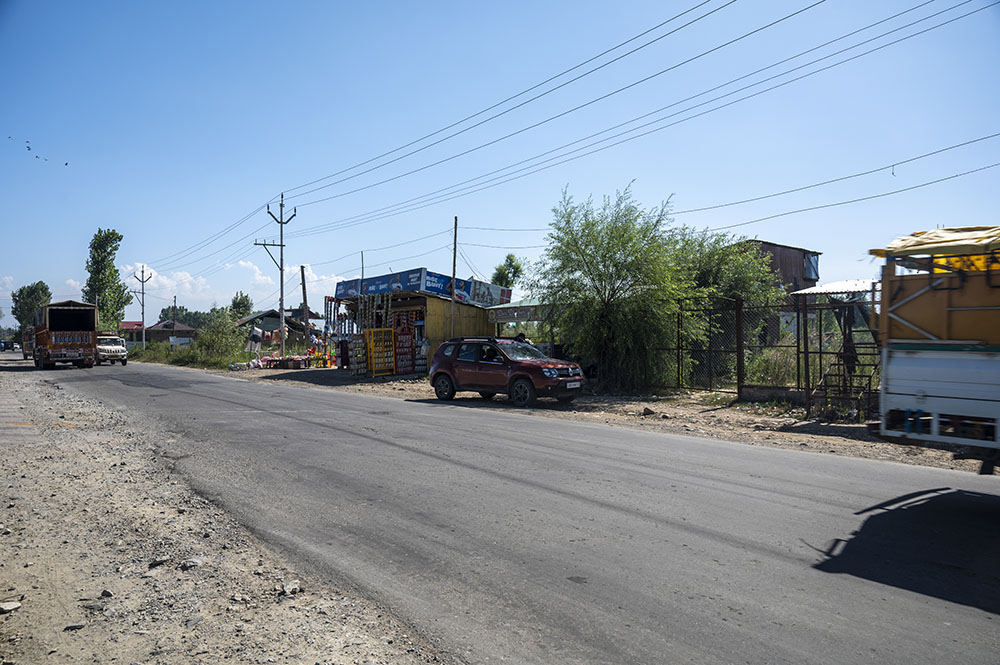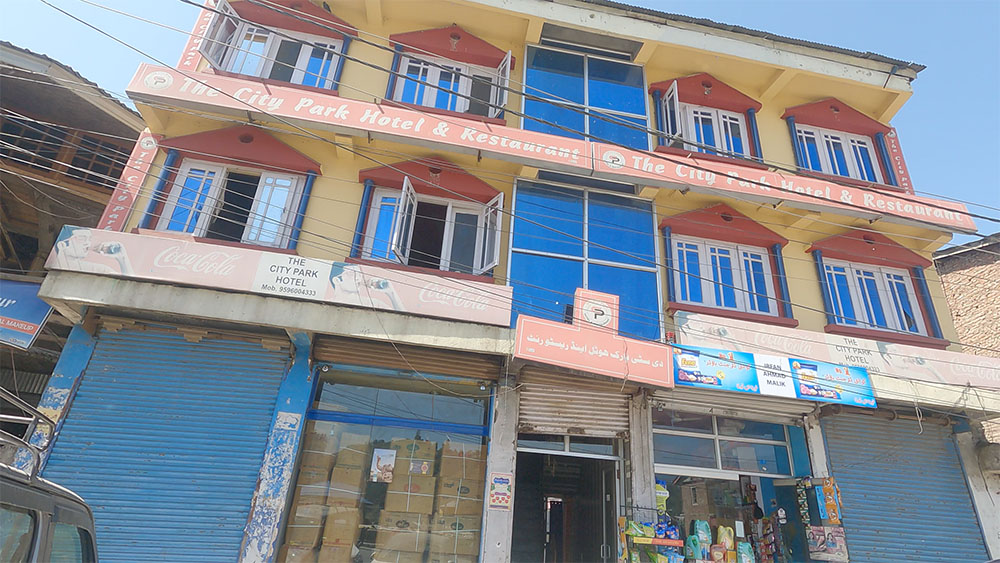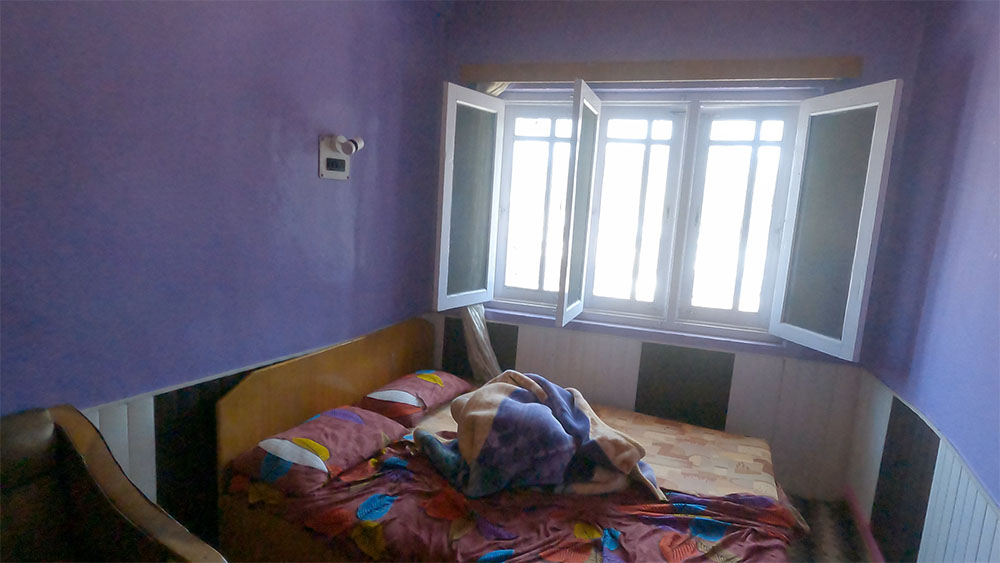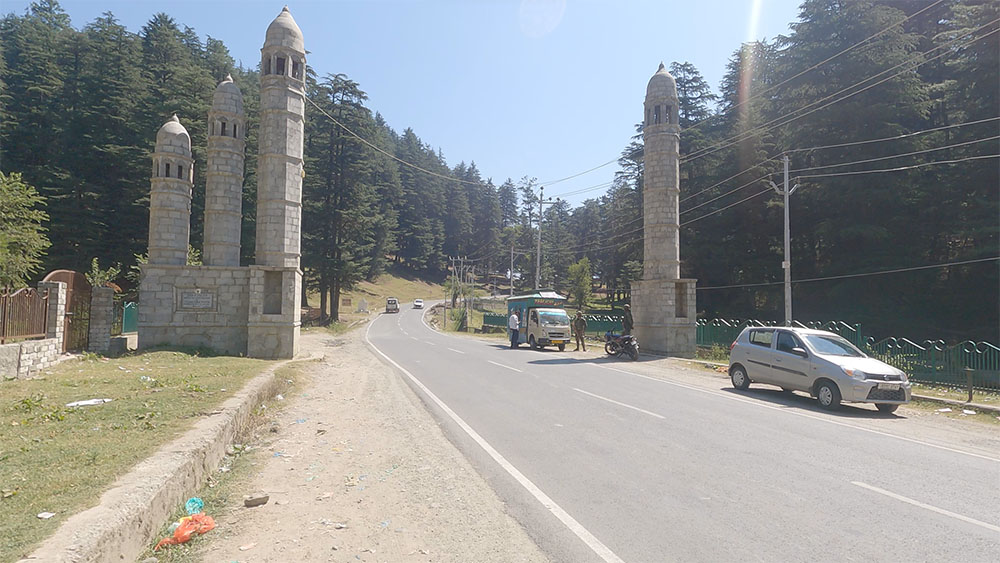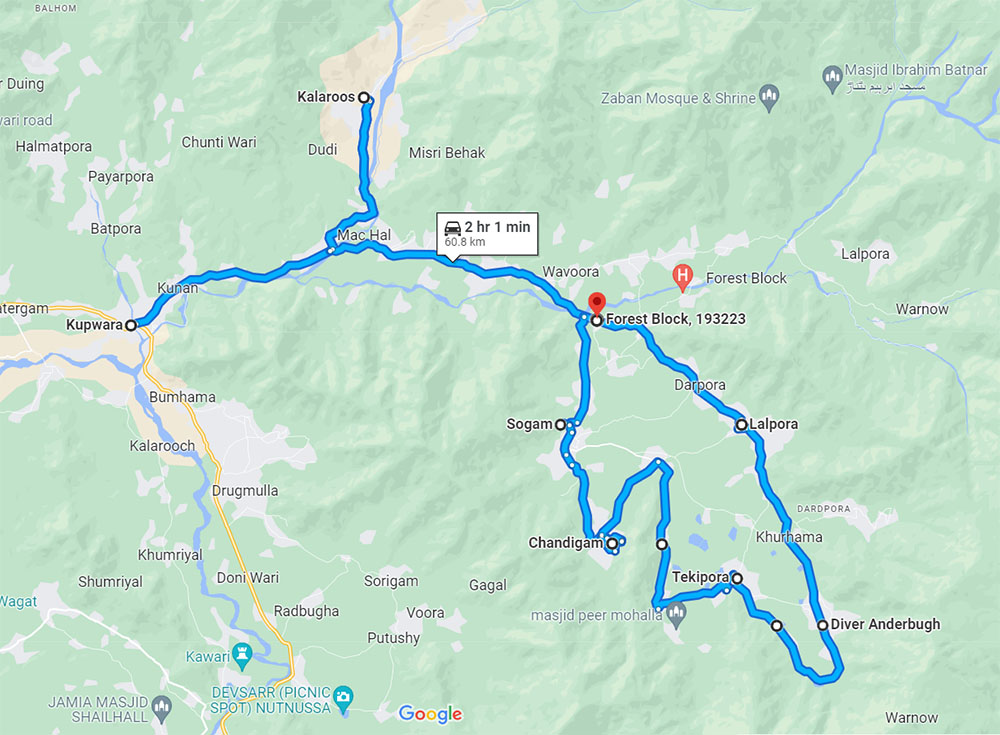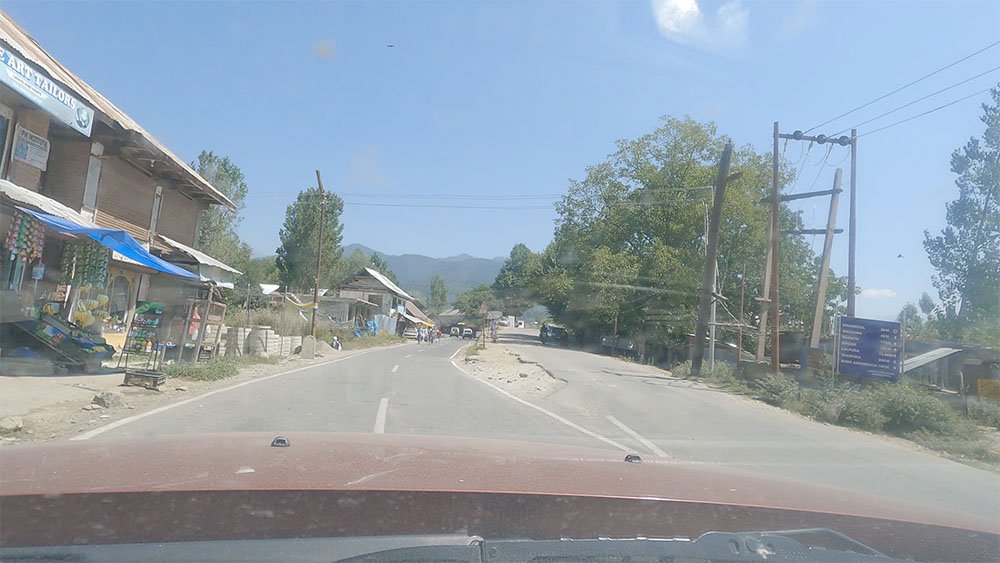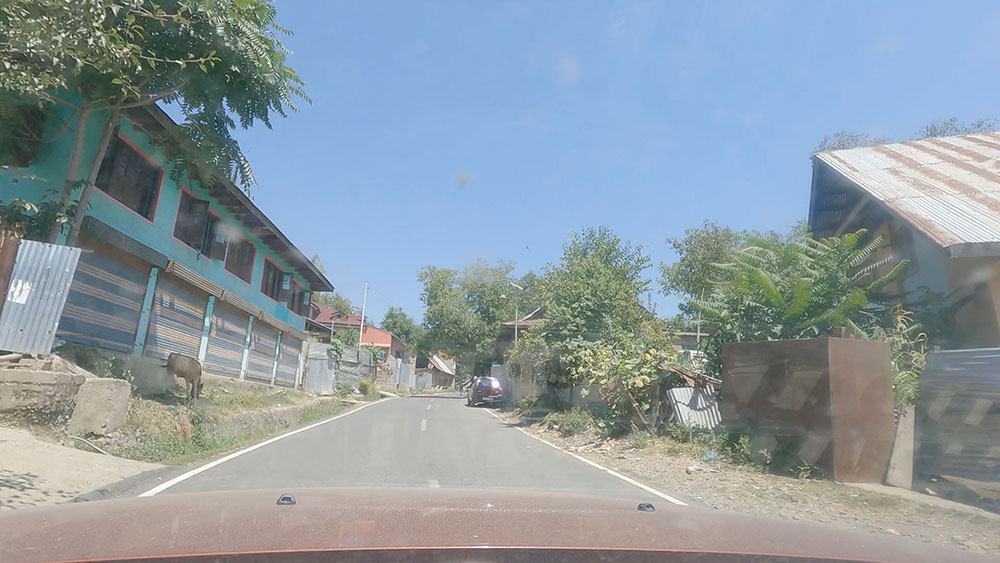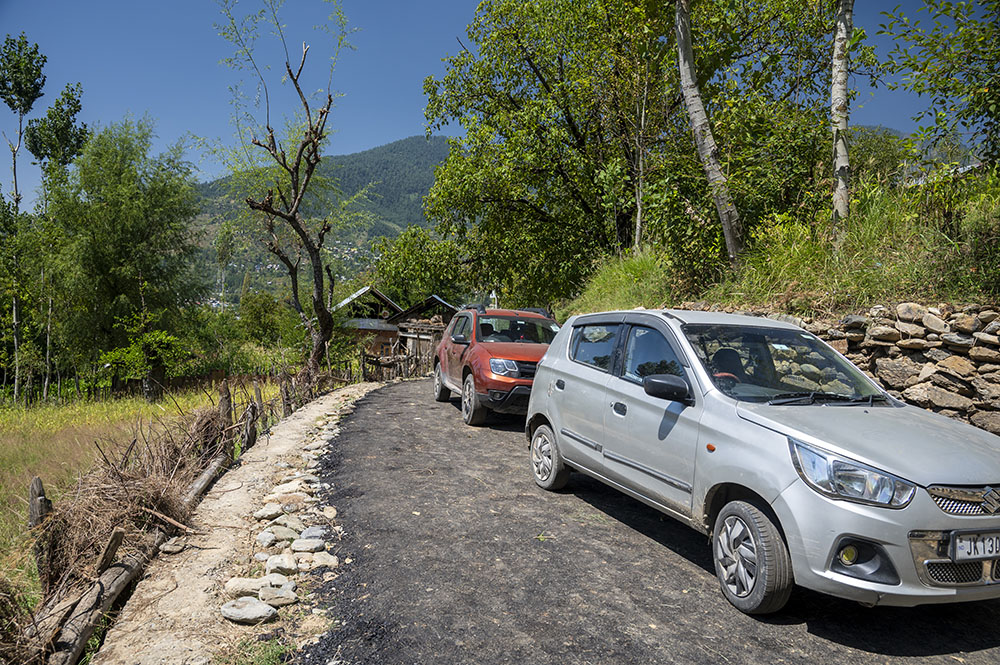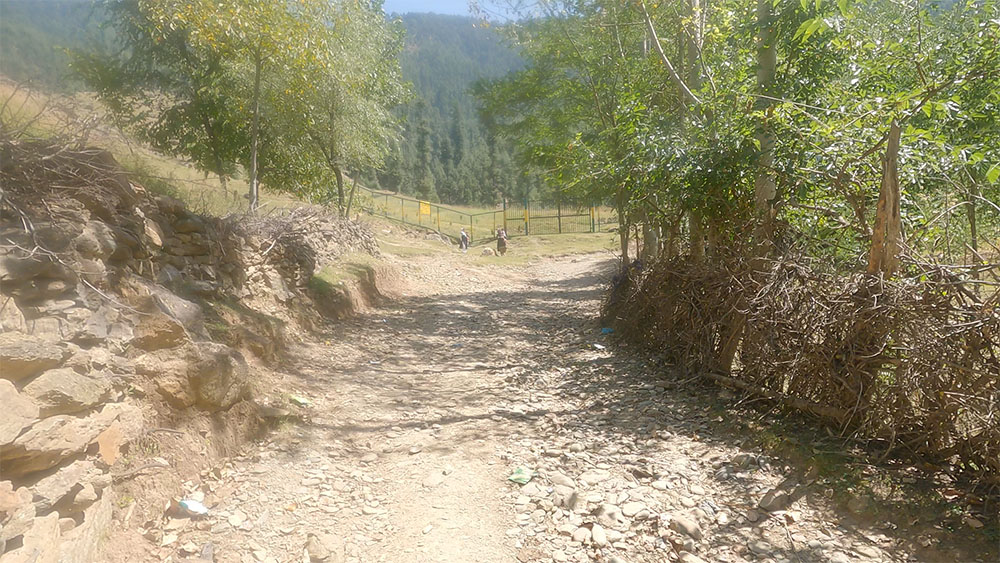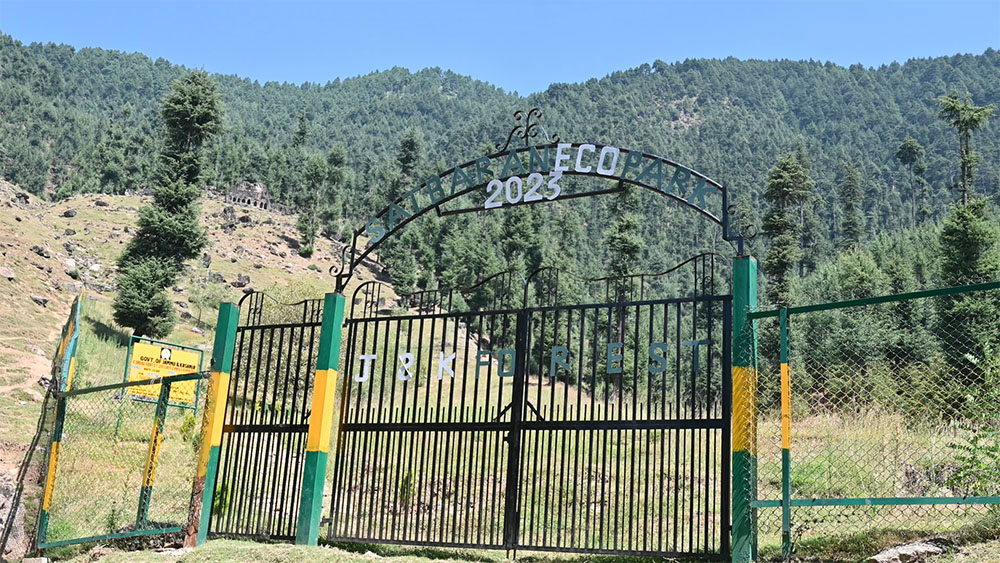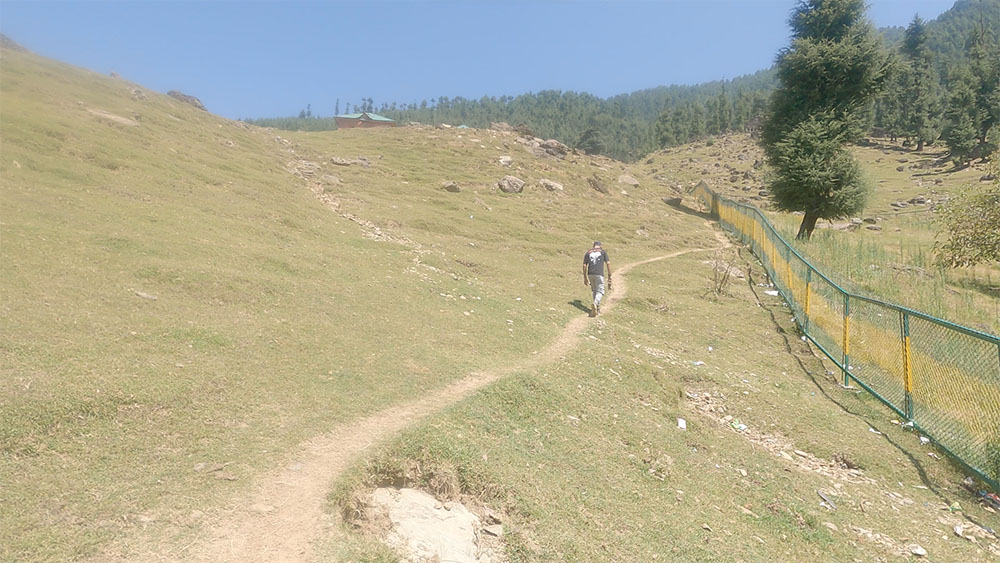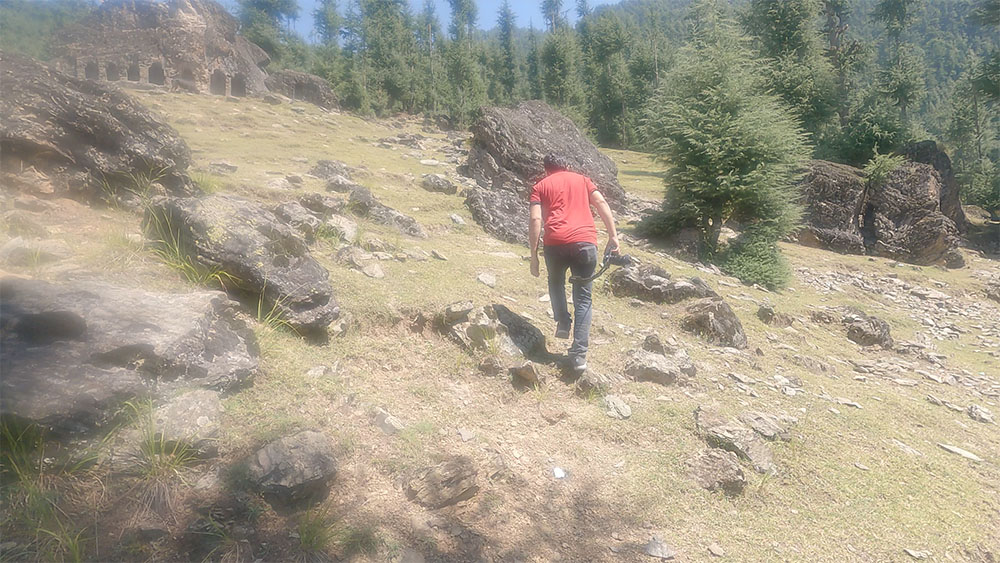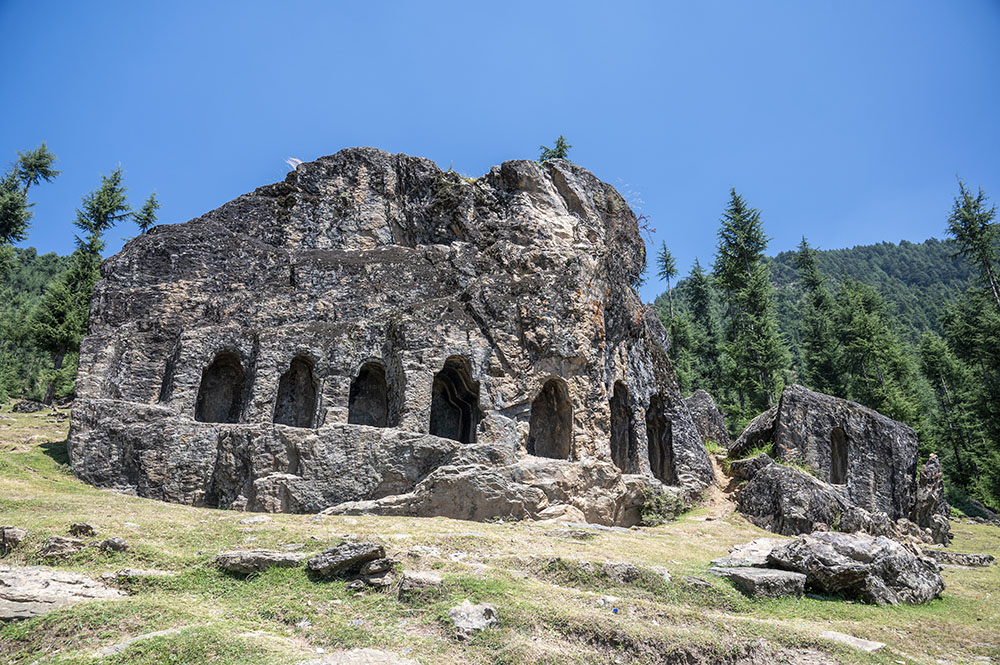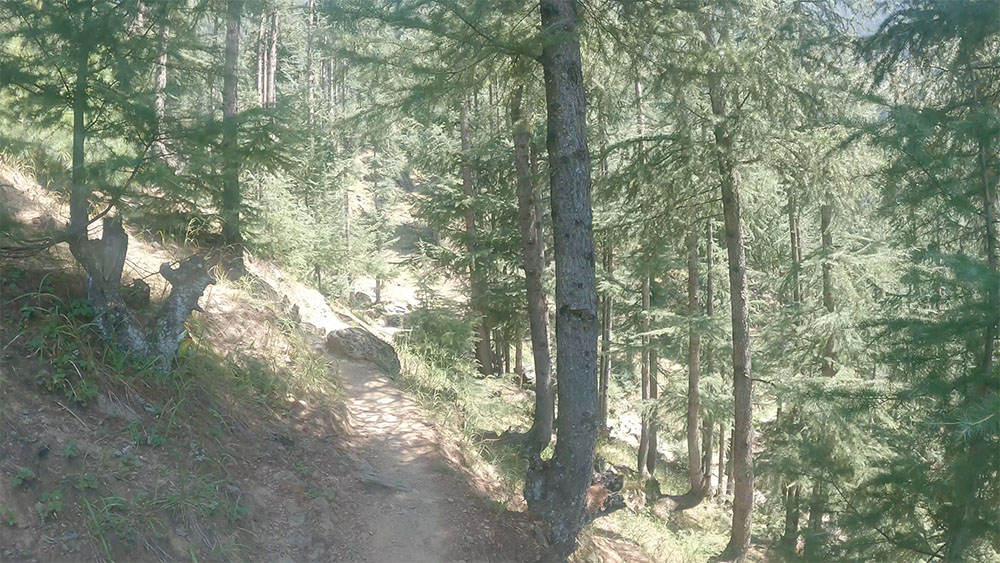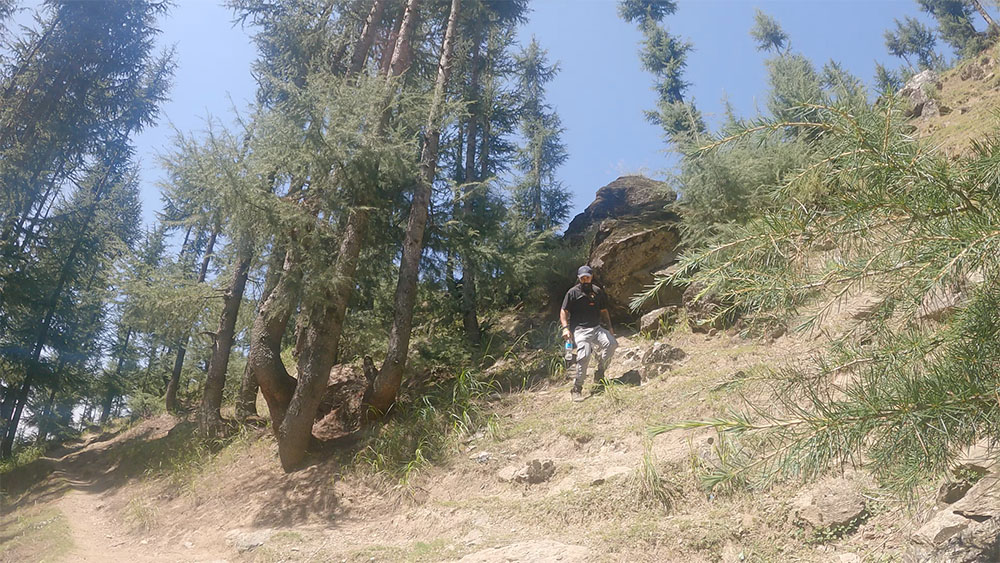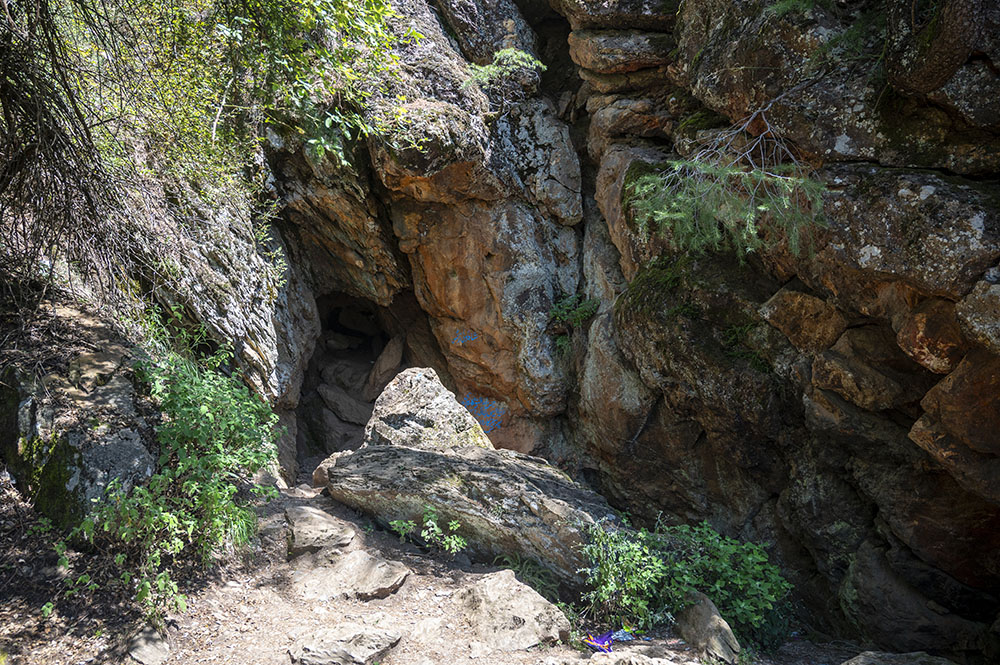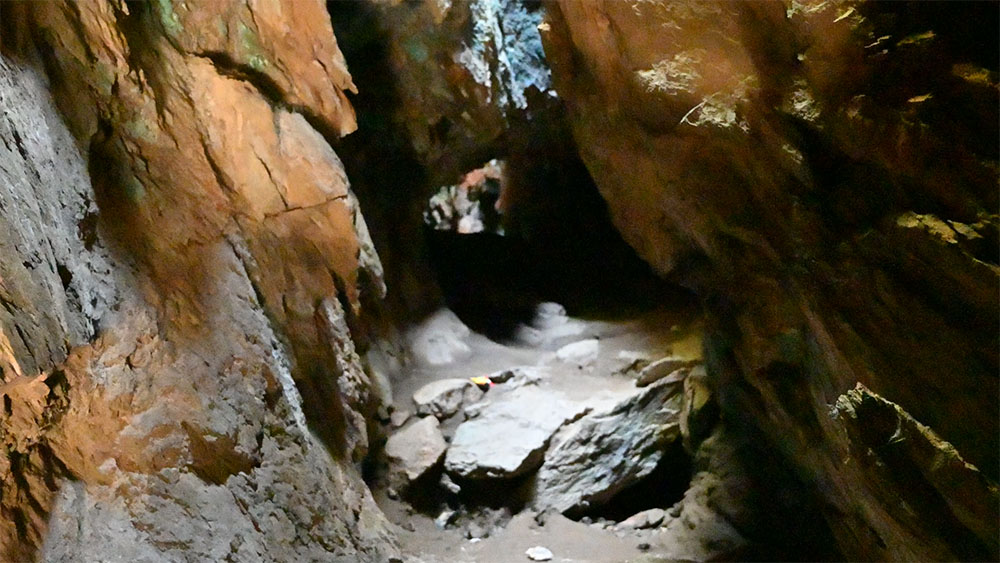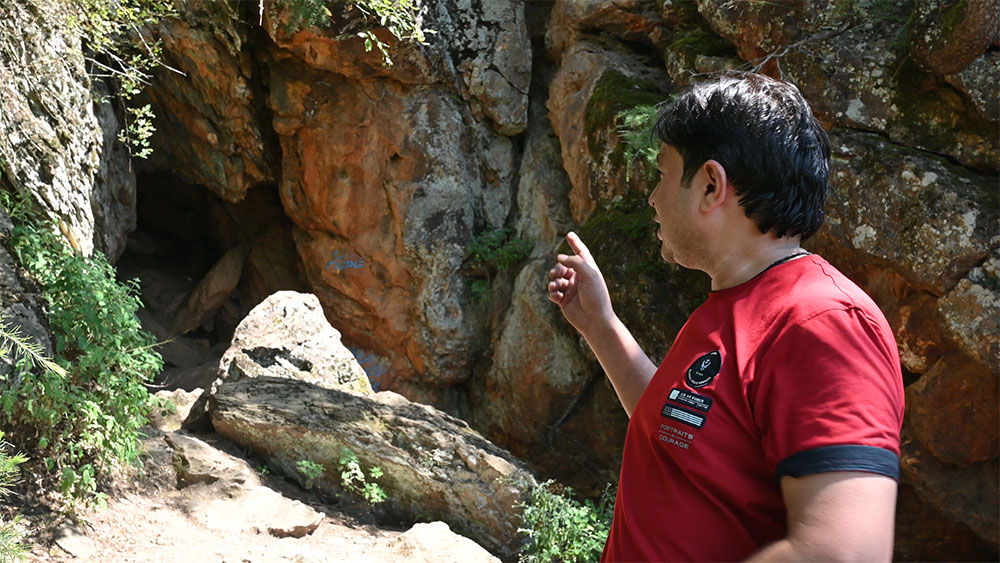The total distance from Srinagar to Lolab Valley is about 90 kilometers. From Kupwara, the entrance gate of the valley is merely 3 kilometers away. But still, this is ideally a 2-day trip from Srinagar if you want to properly explore the valley. There are several other tourist attractions on this side of Kashmir which can also be incorporated in the same trip.
I first heard the name of Lolab Valley almost a decade ago. The very name of the place sounded inviting and I was curious to see it but at that time, most of the tourist places on the Kupwara side were off-limits for tourists because of militancy-related problems.
So a trip to this offbeat destination never really materialized. To be honest, I was not even too eager to come to this side of Kashmir because of safety-related concerns. But in recent years, things have changed tremendously. Now efforts are being made by the government to promote tourism in this area and with each passing year, the number of visitors increases.
So finally, my plan to visit Lolab Valley also came true. We spent about 4 days in and around Kupwara covering places like Lolab Valley, Bangus Valley, and Keran. The post below is a brief narration of our visit to Lolab Valley and also provides several other details on planning a trip.
Below is a video of Lolab Valley that I shot during our visit. You can take a look at it to get a better idea of the place, and the road conditions, and decide whether or not you want to include it in your Kashmir itinerary.
How to Reach Loab Valley from Srinagar
To visit Lolab Valley from Srinagar, you would first have to reach Kupwara. It will be a journey of about 80 kilometers but the travel time can be anywhere between 3 to 4 hours. Once you are in Kupwara, just ask around and follow the road that goes to Lolab Valley.
Planning this trip by Public transport will be tricky and is not advised. You may be able to find a bus from Srinagar to Kupwara but there is no regular bus service within Lolab Valley.
In Srinagar, depending on where you are staying, you will first have to reach Parimpora. That is where you will get either a bus or a shared cab to Kupwara.
You can travel from Srinagar to Kupwara by Bus but beyond that, it is best advised to look for a private taxi. A trip to Lolab Valley means moving from one village to another and exploring the region which can only be done in a taxi.
The Kupwara bus and taxi stand are right there in the main market. You can go there and ask for a bus or shared cab to Lolab Valley but the problem is that it will drop you only to a particular village. Once you are there, you may not find public transport to go to the next village or even return to Kupwara.
By private taxi, you can plan this in two ways. The first one is that you hire a private taxi from Srinagar itself. This will cost you anywhere between Rs. 3000 to Rs. 4000 for a day trip to Lolab Valley. The second way is that you first go to Kupwara by public transport and hire a cab there. This will cost you anywhere between Rs. 1500 to Rs. 2000.
Day 4 & 5 – Pahalgam to Srinagar to Kupwara
The first 3 days of our trip were spent in Pahalgam, exploring several places in its vicinity. The entire idea of this trip was to go offbeat which is what we did on these days. To read the previous parts of the travelogue, please take a look at the links below.
Journey So Far:
- Delhi to Pahalgam – Day 1
- Achabal Mughal Garden – Day 2
- Daksum Valley – Day 2
- Sinthan Top – Day 2
- Chatpal Valley – Day 2
- Betaab Valley & Aru Valley – Day 3
On the fourth day, we traveled from Pahalgam to Srinagar and spent the night there. There is not really a lot to write about these two days. We just reached Srinagar on Day 4, checked into Hotel Grand Valley Inn in Shalimar, went to Dal Lake in the evening and that was all.
Not a lot happened on Day 5 either. We got up a little late and started our day only by 12 noon. The distance between Srinagar and Kupwara is only about 80 kilometers and I was under the impression that we should be able to cover it in 2 hours at most. I was wrong though. The single-lane road and the two-way heavy traffic kept our progress slow.
It nearly took us 4 hours to complete the journey and we reached Kupwara at 4 p.m. Our stay was booked in Hotel City Palace near Kupwara Market. We found the hotel easily and checked in.
Accommodation Choices in Kupwara and Lolab Valley
This entire region, as I mentioned previously, does not receive a lot of tourists. Though things are slowly starting to change now, it is still far from being called a popular tourist destination.
Most of the people who visit here are Kashmiri Locals out on a holiday with their families for an outing. They would return home by evening and won’t really look for a hotel. As a result, accommodation choices here are severely limited.
There are only two hotels in Kupwara and none in Lolab Valley. If you want to stay the night, you will have to check into either of these two hotels in Kupwara or look for a stay in J&K Government rest house, also known as Dak Bungalows.
Also Read: How to Plan a Trip to Kashmir – A Complete Travel Guide
J&K Government Dak Bungalows
Also known as Forest Huts, there are a lot of these rest houses in this region, some maintained by the tourism department and others by the Forest department.
Our stay was also actually booked in the rest house in Kupwara but it got cancelled at the last minute. Some government officials arrived on the same day when we were planning to be there and we were told that the rest house would not be able to accommodate us. That is why we ended up staying in a hotel.
Other than the Kupwara rest house, there is one Dak Bungalow in Chandigam Village, another one in Kalaroos Village, and one in Kairwan Village as well. Some other rest houses include one in Kralpora and another one in Chowkibal, within a 15-kilometer range of Lolab Valley.
The bookings of these rest houses are available online on the online portal of J&K Tourist Department and the website of J&K Forest Department.
If the rest house was not listed on the portal for some reason, then there is a number provided on both these websites. You can call that number and book your stay over the phone.
Hotel City Palace, Kupwara
I had an idea that the hotels in this region would not be that good and we would be better off staying in a government rest house. That is why we booked the rest house in Kupwara but since that booking got canceled, we ended up staying in a hotel instead, much against my own wishes.
The experience of staying in a hotel in Kupwara was nothing less than a nightmare. There are two hotels here, one called Hotel City Palace and another one called Raj Palace. Both hotels are located right next to each other.
Actually, they are not even proper hotels, but rather restaurants that also rent out rooms. The owners just built a few rooms on the top floor and started calling it a hotel. But in all reality, they are just restaurants.
We arrived at the hotel in Kupwara and as soon as I stepped into our room, I knew this was going to be a mistake. The room was way too small, and dirty, with broken furniture, and no ventilation in one of the two rooms we booked.
I wondered how we were going to spend the night there but we were out of options. We had no other choice. I already knew that the other hotel, Raj Palace, was even worse than this one.
So we checked in, thinking that it was anyway just a matter of one night. It was already 5 pm. The plan was to go to sleep early, get up early the next day, and be on our way to explore Lolab Valley. But I was wrong. The worst was yet to come.
A Sleepless Night
Our hotel was located right next to the main road, in the main market, and opposite the bus and taxi stand. So as you can imagine, there was a lot of traffic movement and a lot of noise.
I think this was probably the only time in my life when I had a headache and started to feel nauseous because of the traffic. There was just so much honking and so much sound that it was difficult to even sit in the room.
Closing the window was not an option either. That window that opened right toward the main road was the only way to get some fresh air in the room. If we closed that, there was no ventilation.
The traffic died down sometime by 11 pm and that is when we could go to sleep. But every now and then, a bus or truck would pass honking loudly and will wake us up. By 6 a.m., the traffic was back on and we could not sleep anymore. I think in the entire night, we barely managed to catch 3 to 4 hours of sleep. That is all.
So in short, if you are planning a trip this way, please do not stay in the hotels in Kupwara. Look for accommodation in any of the J&K forest rest houses. Maybe in the future, as tourism increases, there will be better hotels in this region but there are none as of now.
Also Read: Mobile Network in Kashmir & Data Connectivity
Day 6: Kupwara to Lolab Valley
Anyway, the struggle to get a good sleep continued all night and until 8 in the morning. Finally, we gave up and got out of our beds. The next hour was spent getting ready, and moving our luggage back into the car and by 9 a.m., we were ready to start our tour of Lolab Valley.
There is really no particular spot in Lolab Valley that you go to. It is a wide valley and sightseeing here means that you will have to move from one village to another. The entire valley is marked with such small villages and you will have to decide which one you want to cover first. We first decided to go to Kalaroos.
The distance between Kupwara and Kalaroos Village is under 10 kilometers and the road is in quite good condition. As a matter of fact, the condition of the road throughout the valley is very smooth.
Anwar Shah Kashmiri Memorial Lolab Gate
We started from Kupwara at around 9 a.m. Following Google Maps, we started navigating our way to Lolab Valley. We got out of Kupwara, drove for about 2 kilometers, and arrived at the entrance gate of Lolab Valley, known as Anwar Kashmiri Memorial Lolab Gate.
There is not much to this gate, just two stone pillars on each side of the road. Still, it really looks pretty and charming. I am not really sure when this gate was built but it was to commemorate Anwar Shah Kashmiri, a Kashmiri Muslim scholar and jurist.
Lolab Valley was the birthplace of Anwar Shah. He spent his childhood here before moving on to other parts of the country. He is greatly respected in Lolab Valley and throughout Kashmir and regarded by many as one of the most versatile and prolific hadith scholars produced by the subcontinent.
If you are visiting Lolab Valley, posing in front of this gate and clicking a few pictures is something you cannot miss. It is like a ritual that you have to do. Right next to the gate is a small park and a meadow-like area next to the river. The overall setting of the place and the gate is very scenic. We took a small break here, clicked a few pictures, shot some videos, and continued our journey.
Also Read: How Much Does a Trip to Kashmir Cost?
Khumriyal Village
After a short drive, we arrived in the first village of Lolab Valley known as Khumriyal. We again took a short break here to get some tea and also to talk to the locals to get an idea of the valley and places to visit here.
As I mentioned previously in the article, a trip to Lolab Valley would mean that you would drive around from one village to another, exploring the region. This journey can be completed in the form of a circuit. Take a look at the map below.
The part in the map where it reads Mac Hal and the road bifurcates toward Kalaroos is where Khumriyal Village is. So the idea here is that from Kupwara, you reach this point, go toward Kalaroos, and return. From there, you turn right and then see the other villages in the form of a circuit.
This is how we completed the journey but you can do it in any way that you see fit. The basic idea is that you move from one village to another while seeing the valley on the way. I did not go toward some villages like Warnow but you can do that if you had the time.
After talking to the locals in Khumriyal, we first decided to go to Kalaroos Village. About a kilometer after Khumriyal, the road bifurcates into two. The one going to the left goes to Kalaroos Village and the one to the right goes to the other villages of the valley, as you can see in the map above.
Also Read: Clothes for Kashmir Trip – What to Pack
Kalaroos Village
So our plan was that we would first go to Kalaroos, then come back to Khumriyal, and then explore the rest of the Lolab Valley. The road beyond Kalaroos climbs up a high-altitude pass called Zamindar Khan Gali and then down to the border village of Machil. But to go there, you need to get permission from the DC office in Kupwara which we did not have.
So we really had no other option but to visit Kalaroos and then come back to Khumriyal again. Kalaroos is a small village located in the Lolab Valley of Kashmir. It is located at a distance of about 11 kilometers from Kupwara and 96 kilometers from Srinagar. This village is best known for its caves which are believed to be part of an ancient tunnel system leading to Russia.
Is it true? No, it is not. This myth was proven wrong a couple of years ago by some cave explorers. They went in and after hours of exploring found that none of the caves went beyond 50 to 60 meters. All the passages terminated after that.
But still, it continues to be the biggest tourist attraction of Lolab Valley, one that has been driving tourists here for a long time. The entire idea of the caves and the very name of the village sounds mysterious and people love to come here to see these caves.
After having our tea in Khumriyal, we crossed the market area and reached the spot where the road bifurcated. From here we turned left.
Weather of Lolab Valley
Let me also add a note about the weather here or maybe I should call this a word of advice. In all my years of travel and all the places that I have been to, I have never faced such harsh sun as I did in Kupwara and Lolab Valley.
I do not know what the reason is but the sun here is scorching hot. I was there in Lolab Valley for a day and the entire day the AC of our car was on. It was running at full capacity and yet the car did not cool down.
We were sweating in the car all day long. What made things worse was the sun. Whenever the sunlight was touching our skin, it felt like burning and all of this was in the month of September. I cannot imagine how things here would be in May and June.
The number of trees in the valley is also alarmingly low. It is mostly just paddy fields and trees are limited to the mountain slopes in distance. So there is really no escape from the sun and there will be sunlight finding its way into the car, on your body, and burning it.
It was hard to believe that it was Kashmir that we were visiting. It felt like I was somewhere in Ladakh. As a matter of fact, even the sun in Ladakh did not feel as harsh as it did in Lolab Valley.
So I would strongly recommend carrying a sunscreen location of the highest SPF. You will surely need it. It won’t help with the heat but at least it can prevent tanning to some extent.
Also Read: When is the Best Time to Visit Kashmir?
Kalaroos Caves Trek
So, struggling with the harsh sun and after a short drive from Khumriyal, we finally arrived in Kalaroos Village.
There was nothing significant about Kalaroos. It was just a small village surrounded by paddy fields. If we remove the caves from the equation, I doubt that this village will receive any tourists at all. But because of the caves, Kalaroos is what drives tourism in the valley.
We navigated our way through the narrow streets of the village but had trouble finding the way to the caves. So we took help from locals, asked for directions, and after a brief drive of 5 minutes, we reached this spot.
This is where the motorable road ended. Beyond this, we were to start walking which we did, and reached this open spot.
There was a small enclosed area that looked like an attempt to build a park that never was completed. In the distance, at the top of a small hill, we could see Satbaran and the path to the caves.
Satbaran
Satbaran is a giant rock sitting on the top of this hill. Its name literally means seven doors because there are 7 doors-like carvings on one side of it. There is no information available about who built it and why but it is definitely a mysterious rock that is gradually gaining attention as a tourist spot.
My friend and I looked at the steep trek going uphill and then looked at each other smiling. The problem was not the trek. Even though steep, it was a short one and we knew that we would have no trouble completing it. The problem, however, was the scorching sun that was really burning our skin.
As you can also see in the picture, there are no trees as well on the trek. So we had no other choice but to walk in the sun and climb up this hill. For a minute, we even wondered if it was really worth all the effort. But we were already there and giving up now would have made no sense at all.
So we both sat under a tree for a minute, caught our breath, and started walking up.
This entire area is very remote and on the outskirts of the village. There is absolutely nothing here and I would highly recommend bringing your own water bottle. We were not carrying any water at all and that was one thing that we missed the most.
We walked up the hill, then we walked a little more, and then we continued walking and finally we reached the top. Right in front of us was Satbaran.
The Rock
Now we did not know what to do. I mean, how much can you really look at a stone? It looked like just an ordinary piece of rock with some holes in it. What makes it famous and mysterious are the seven door-like carvings on this rock.
The most popular theory is that Satbaran may have been a part of a larger structure, possibly a temple, which collapsed or was intentionally destroyed. Another theory states that the entire cave system near Kalaroos was actually ancient temples. There were 7 temples in total and that is why there are 7 doors carved on the rock as well. It is also believed that it used to be a temple made by Pandavas.
We walked around the stone a few times, shooting pictures and videos. Then we sat down in its shadow to catch our breath since there were absolutely no trees nearby. After a brief break, we again started walking uphill toward the caves.
There are several theories about why the village is known as Kalaroos and exactly how many caves there are. One theory states that the original name of the place was Qila-e-Roos, which means Russian Fort. Why was it called so? No one can answer that question. The word Roos here means Russia but over time, the word Qila got twisted into Kala, and the village is now called Kalaroos.
Also Read: How to Plan a Kashmir Trip Itinerary
Kalaroos Caves
Like the name of the village, the information on exactly how many caves there are also differs. As far as I know, there are only 3 caves but some say that there are 7. I cannot really confirm this. Maybe there were 7 caves in ancient times and that is what is carved on the Satbaran rock but now there are only 3 cave-like openings left in the mountains now.
While we were driving through the village trying to find our way to the caves, a couple of villagers asked us if we needed someone as a guide. At that time, we just said no but now, as we were walking through the forest trying to find the cave, we realized that was a mistake. We should have brought someone along.
We just kept following a path through the forest hoping that it would eventually lead us somewhere. To be honest, we had absolutely no idea if it was indeed the way to the cave but since it was the only path we could see, there was really not much of a second choice.
Thankfully, our assumption proved right. The path did bring us to the first cave in about 15 minutes. It is at an altitude of 1,980 meters (6,496 feet) elevation. See the picture below.
This cave has a narrow up-trending passage and to be honest, it looks more like an opening of an underwater stream rather than a cave.
The Disappointment
I somehow already had an idea that our visit to the caves would end up in a disappointment and that is exactly what happened. Standing there, I knew that there was no way this was a tunnel to Russia. In ancient times, it was just an opening for the underground water to come out in the form of a water stream.
Lolab Valley is anyway known for its water stream. There are plenty of those here in almost every village. This particular water stream however has dried up now leaving a huge gap in the rock. That is all that it was.
The question now was what to do next. I knew that there were 2 more caves but neither of us was eager to try to find those for three reasons. The first one was that we were already very tired. The sleepless night in Kupwara Hotel was now starting to take its toll and every step up the mountain was a task in itself.
The second reason was that it was getting way too hot and we weren’t carrying any water either. We were just so thirsty that I would have paid Rs. 1000 for a water bottle. The third and the biggest reason was the risk of getting lost.
We were deep in the forest and going further in without a proper guide was a risk. There was no telling which way the caves were and we could have easily gotten lost. So after a bit of thinking, we decided to not risk it and be on our way back down.
The Second & Third Cave
The second cave is located higher up at 2,020 meters (6,627 feet) elevation. It has the largest entrance of the three caves. The third cave sits at the highest elevation, at 2,260 meters (7,415 feet).
I was eager to see the second cave though because it has a proper cave-like opening and people can easily go in to explore. So with a resolution to return to Lolab Valley once again in the future and come back to see the caves with a local guide, we started trekking down.
The way down was easier and we were back to our car in no time. We drove to the village market and the first thing we did was to stop at a shop to get some water. From there, we took the same road back to Khumriyal and it was now time to explore the rest of the Lolab Valley.
- Journey Ahead: Sightseeing in Lolab Valley – Places to Visit & Things to Do
I moved this information to a different post because otherwise, this one article would have gotten way too long. Please click on the link above to continue reading the next part of the travelogue.
Srinagar to Lolab Valley – Conclusion
I hope the travelogue, pictures, and information above on planning a trip from Srinagar to Lolab were of help. If you have any questions, you can contact me on Instagram and I will be happy to answer. You can also consider subscribing to my YouTube channel and asking a question there.
Error: No feed with the ID 5 found.
Please go to the Instagram Feed settings page to create a feed.

